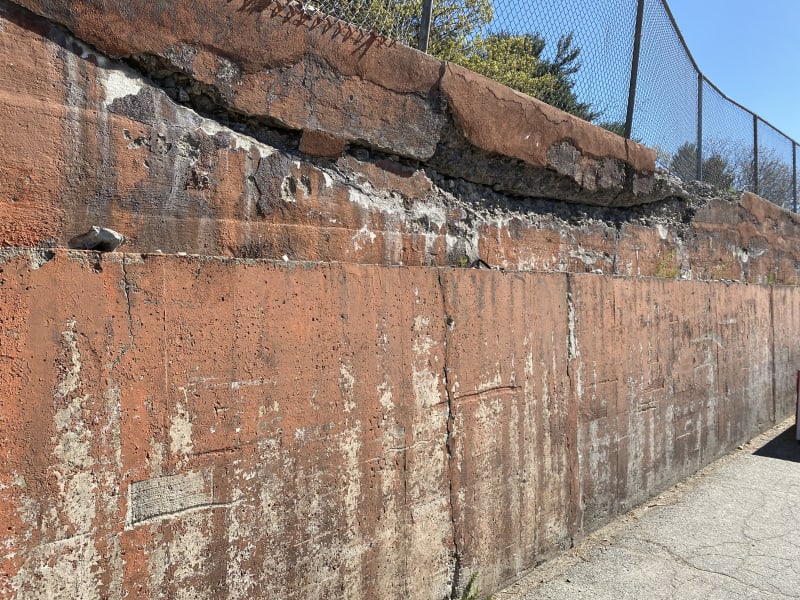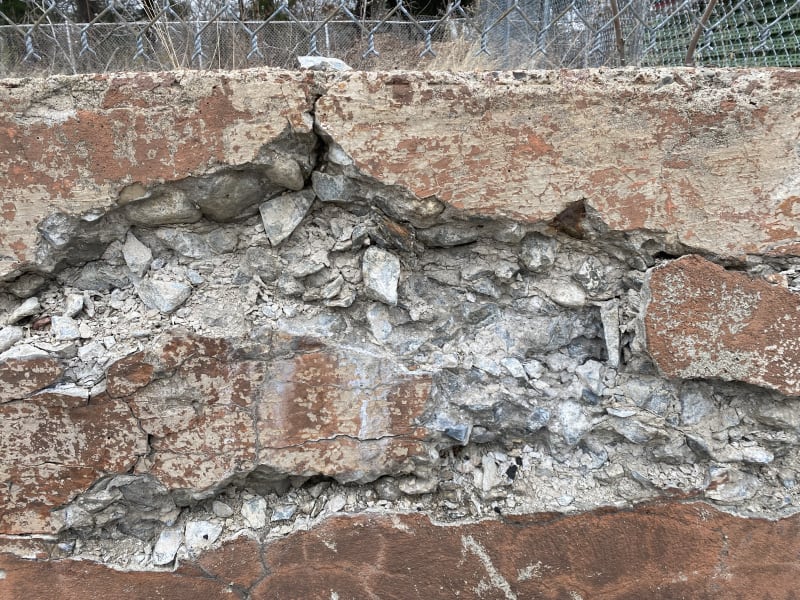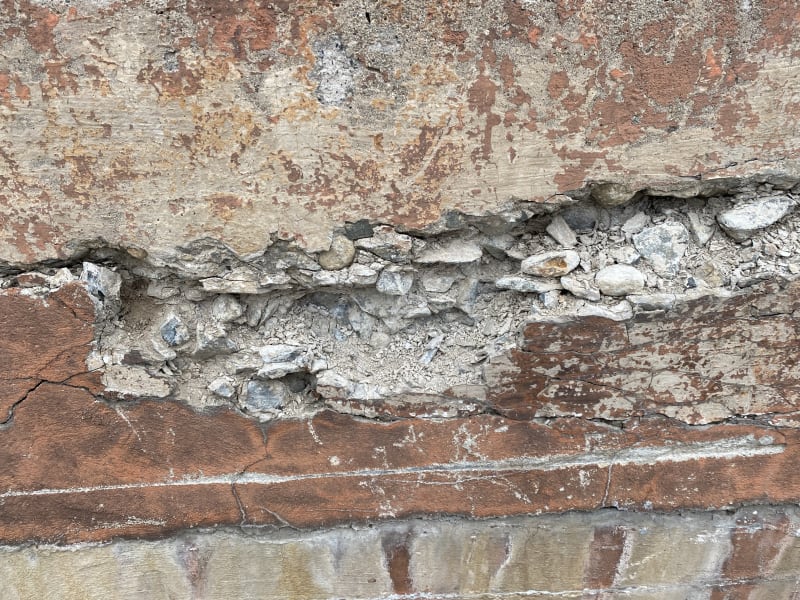I visited a potential project with a contractor client today. This existing wall (age unknown, but it's not new) has begun to severely deteriorate.



Now, the client isn't really interested in why the wall is in bad shape but I am.
It almost appears as if the mix was too large (as I would have guessed the aggregated to be 3"). It also looks like over 50% of the mix was aggregate. The fine aggregate and cement mixture just seems to be falling apart. You can pick it apart with your fingers. This project is located in the Northeast US so it is routinely exposed to freezing and thawing cycles.
Does anyone have any idea as to what might be the cause of the deterioration we are seeing?



Now, the client isn't really interested in why the wall is in bad shape but I am.
It almost appears as if the mix was too large (as I would have guessed the aggregated to be 3"). It also looks like over 50% of the mix was aggregate. The fine aggregate and cement mixture just seems to be falling apart. You can pick it apart with your fingers. This project is located in the Northeast US so it is routinely exposed to freezing and thawing cycles.
Does anyone have any idea as to what might be the cause of the deterioration we are seeing?
